Text
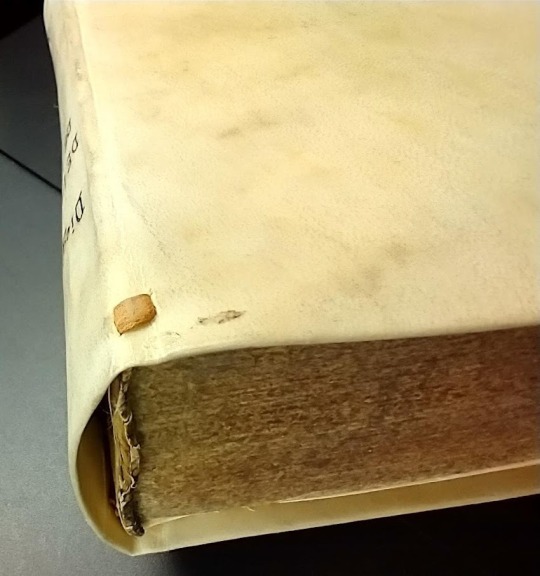
Wordy Wednesday
Vellum: Another term for parchment. Vellum is sometimes used to refer specifically to parchment made of calf skin or lamb skin, but this usage is not very consistent. Calves and lambs, being younger, tended to produce higher-quality parchment without many blemishes and so their skins were in high demand. The term “uterine vellum” is used to refer to parchment made from the skin of unborn calves or lambs. Some early books were printed on vellum rather than paper as luxury commodities.
#vellum#parchment#bookhistory#rare books#books#history#libraries#special collections#mizzou#university of missouri
18 notes
·
View notes
Text
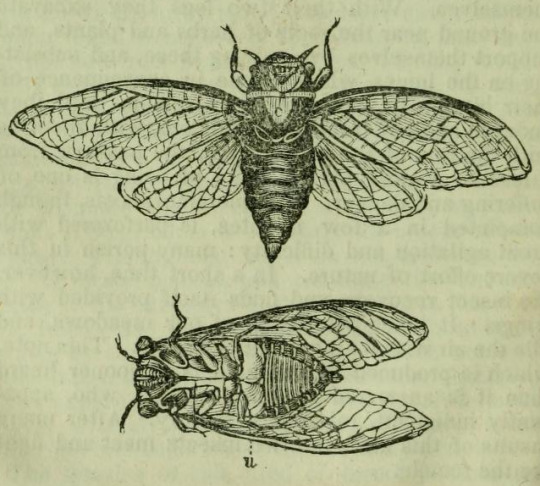
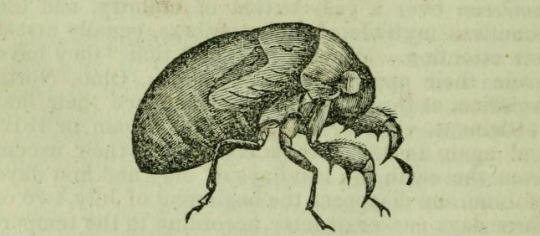
The Natural History of Insects; In Two Volumes. Vol. II. 1835.
Internet Archive
762 notes
·
View notes
Text
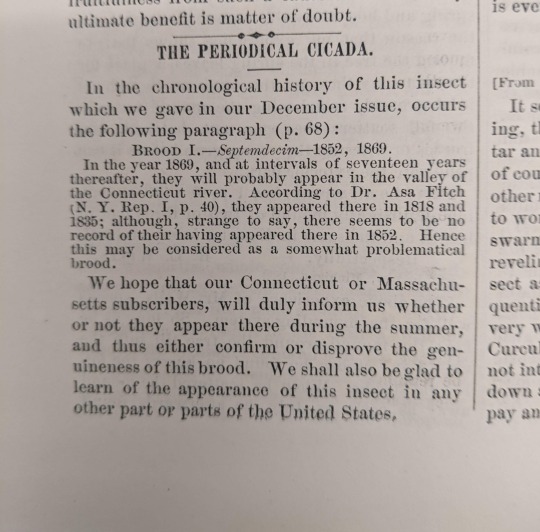
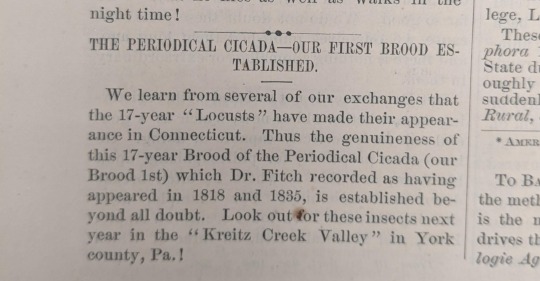
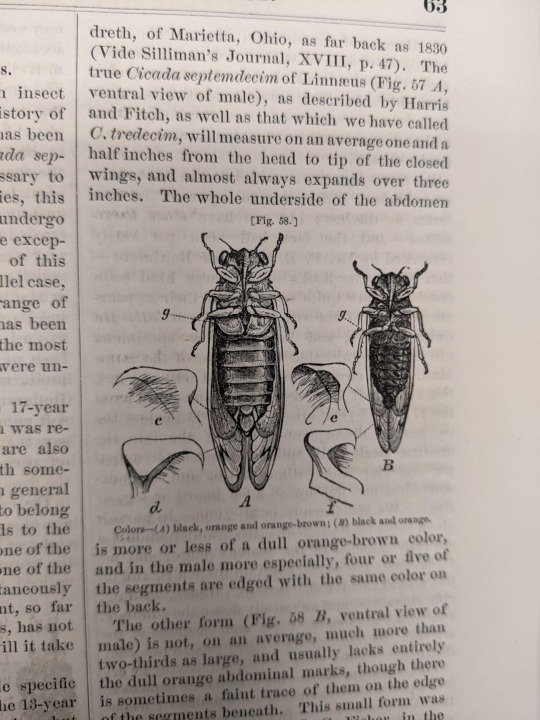

It's cicada season! Our 13-year cicadas in Brood XIX are starting to emerge. We noticed cicada shells scattered across the sidewalks on campus today, and judging from their last appearance in 2011, there are many more to come.
Cicadas don't seem to be in published scientific research until the 19th century. Naturalist Benjamin Banneker recorded cicada broods in 1749, 1766, 1783, and 1800, and was one of the first scientists to observe that this brood emerged on a 17-year cycle. However, racism excluded Banneker from the scientific community, and his research was not published until fairly recently. More about Banneker's research on cicadas.
The images above were published well after Banneker wrote down his observations. They are from the journal American Entomologist, which published an article with illustrations of cicadas in 1868, and asked readers to confirm the emergence of Brood I - another 17-year brood - in 1869.
Watch for more information on periodical cicadas to emerge next week!
#cicadas#entomology#insects#bugblr#bugs#history of science#histsci#mizzou#special collections#libraries#university of missouri#rare books#bookhistory#history#illustration
5 notes
·
View notes
Text
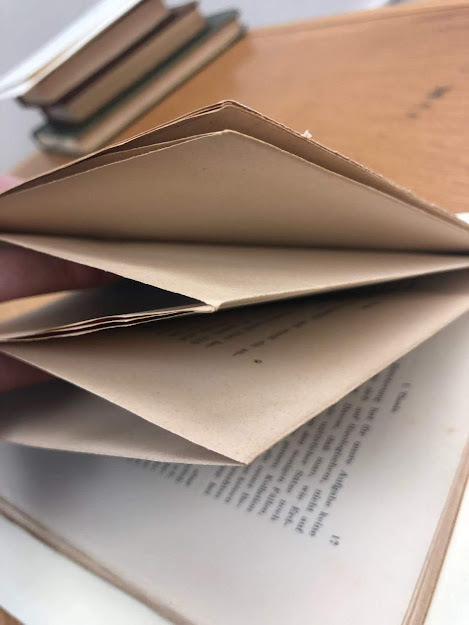
Wordy Wednesday
Unopened: A book where the folds on some of the edges have not been cut. These folds are produced as a natural byproduct of bibliographic formats smaller than folio: in a quarto, they are usually at the top of the book and in an octavo, there are usually folds at the top and at the fore-edge. Binders would commonly slice these open free of charge, but even into the 20th century, books were sometimes delivered still unopened so that the book’s purchaser could savor the experience of cutting them open. Some readers would cut the folds as they read the book, so you can sometimes see exactly when a fickle reader gave up and moved on to another book.
#bookhistory#rare books#books#history#special collections#libraries#mizzou#university of missouri#john henry
10 notes
·
View notes
Text

Calling all pet lovers! Special Collections has a new online exhibit: Fancy Magazines for Pet Fanciers. We showcase magazines from the Husni Collection. In this exhibit, we are showcasing fourteen pet-centric magazines. In the interests of space, we have limited ourselves to four kinds of pets: birds, cats, dogs, and ferrets. We present them in alphabetical order, so please don’t think that the order of the pets in any way indicates our preference! We hope that you enjoy looking at some of these magazines and that they remind you of some of the pets you may have had or met over the years.
See more at the exhibit: Fancy Magazines for Pet Fanciers: Birds, Cats, Dogs, and Ferrets.
#LibrariesOfInstagram#Mizzou#ColumbiaMO#Pets#Dogs#Ferrets#Cats#Birds#SpecialCollections#RareBooks#Archives#Magazines
15 notes
·
View notes
Photo

Callot, Jacques, 1592-1635 (Illustrator). Les caprices. 17. Deux femmes de profil : [1 leaf], 1621.
#illustration#art#engraving#callot#fashion#fashion history#history#bookhistory#special collections#rare books#university of missouri#mizzou#libraries
29 notes
·
View notes
Text

From our stacks: "Another worker makes file cards for each book, showing the book's title, author, and other information. The cards for nonfiction books also show the book's library numbers. Then the cards are filed in the library's "card catalog"." From What Happens at the Library by Arthur Shay. Chicago: Reilly & Lee Books, 1971.
202 notes
·
View notes
Text

We've just launched a new site focusing on material features in our early manuscripts, with tutorials on bindings, pages, content, and decoration, and links to digitized manuscripts with those features.
365 notes
·
View notes
Text
Made some major additions to my collection of libraries and special collections that are active on here on good ole Tumblr. Check 'em out!
132 notes
·
View notes
Text
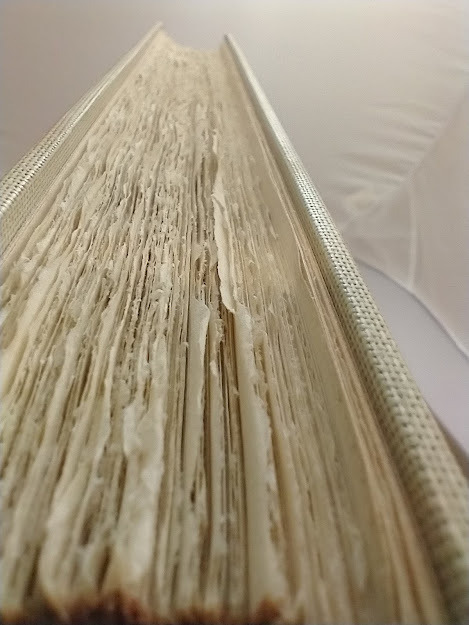
#WordyWednesday
Uncut: A book whose margins have not been trimmed. Typically, a binder would slice off the edges of a book’s text block after binding, thereby getting a nice smooth edge to all the leaves. If a book was rebound often, this inevitably meant that the margins would get smaller and smaller until in the most extreme cases, some of the text itself might be cut off. A book might be left uncut either to avoid this or because the book’s owner likes the looser, uneven effect of an untrimmed book. Any book with a deckle edge will necessarily also be uncut. An uncut book may also be unopened, though the two are not the same.
21 notes
·
View notes
Text


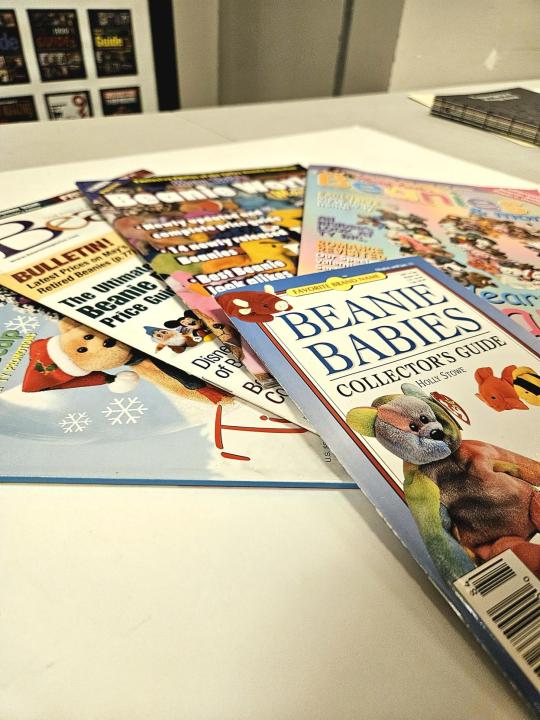
Beanie Baby Bonanza! Created in 1993, Beanie Babies were an instant pop culture craze, and many collected them as financial investments. Throughout the 90s Mary Beth Sobolewski released several collector and price guides tracking the rise and fall of the Beanie Baby market. Few of the Beanie Babies continue to bring high prices in the collector market, but most sit collecting dust in attics and basements. These are just a few of the many hobby magazines found in the Husni Collection.
#mizzou#special collections#libraries#university of missouri#bookhistory#history#magazines#history of magazines#beanie babies#haley
14 notes
·
View notes
Text

@unproduciblesmackdown #Part of it is because of how the print shop is set up: you don't set your type on the printing stone, you set it in a "composing stick" while you're standing in front of the cases. As a result, you have to set it upside down to keep it from falling out of the stick.
#Type has a little nick on one side of the "body" (the long bit of metal with the letter on one side) which lets you know you've got all the type set up the right way around. That nick is at the foot of the letter.
#You're right about the reason we use "font" to refer to different sizes on a computer. A printing font is a complete set of all the letters and symbols in a particular typeface *in a particular size*. You can have a 12-point Roman font and a 14-point Roman font and they are not interchangeable, since the 12-point letters are smaller and won't fit with the 14-point letters.
#On a computer, it's all ones and zeros (typically rendered in raster graphics which can be scaled up and down at will) but they chose to adopt "font" as a way to refer to a typeface, probably since there's no type involved anymore.
#Hope that helps!

#WordyWednesday
Type: The letters used to print words. Generally, the term refers specifically to moveable type where the letters can be rearranged in any order to print any text. Printing with moveable type was undertaken in Asia as early as the 11th century and was separately invented in Europe in the 15th century by Johannes Gutenberg. A design for a given alphabet is called a “typeface.” A complete set of type in a specific typeface is called a font.
19 notes
·
View notes
Text

#WordyWednesday
Type: The letters used to print words. Generally, the term refers specifically to moveable type where the letters can be rearranged in any order to print any text. Printing with moveable type was undertaken in Asia as early as the 11th century and was separately invented in Europe in the 15th century by Johannes Gutenberg. A design for a given alphabet is called a “typeface.” A complete set of type in a specific typeface is called a font.
#typography#printing#bookhistory#rare books#history#books#libraries#special collections#university of missouri#mizzou#wordy wednesday#john henry
19 notes
·
View notes
Photo
Reblogging for Earth Day!

Svante Arrhenius was the first scientist to quantify how levels of carbon dioxide in the atmosphere could affect the surface temperature of the earth. Like Tyndall and Fourier, Arrhenius used the metaphor of a greenhouse to explain how the atmosphere traps heat. He predicted that doubling the CO2 in the atmosphere would raise the average temperature by about 4 degrees Celsius, a reasonably close estimate by today’s standards. He was also the first to link human activity to the amount of carbon dioxide in the atmosphere.
It is interesting to note that Arrhenius did not see this warming effect as a cause for concern. Instead, he thought it would keep the world safe from another ice age.
Is it probable that we shall in the coming geological ages be visited by a new ice period that will drive us from our temperate countries into the hotter climates of Africa? There does not appear to be much ground for such an apprehension. The enormous combustion of coal by our industrial establishments suffices to increase the percentage of carbon dioxide in the air to a perceptible degree.
Svante Arrhenius (1859-1927). Worlds in the Making: The Evolution of the Universe. New York; London: Harper, 1908. MU Depository 113 Ar69
Read online
This is the last highlight we’ll be sharing from our climate change exhibition, but you can take a look at the rest at http://exhibits.lib.missouri.edu/exhibits/show/climate.
#climate change#arrhenius#climate#greenhouse effect#history of science#special collections#histsci#rare books#university of missouri#mizzou
22 notes
·
View notes
Text

From the classroom: a book owned by at least three prominent classicists and folklorists, inscribed by Heinrich Schliemann in Greek "To the lover of the arts Mr. [Erik Barren or Henry Warren?] as a memorial. 1874. Schliemann," and later from Samuel Preston Bayard to Albert Bates Lord. Bayard was a renowned folklorist and musicologist, and Lord's work was foundational in the study of oral traditions such as the Iliad and Odyssey. RARE DF220 .S34 1869
#heinrich schliemann#classics#greek#classicists#albert lord#mizzou#special collections#libraries#rare books#bookhistory
13 notes
·
View notes
Text

#WordyWednesday
Tree calf: A binding style, popular from the 1770s until the late 1920s, where calfskin leather would be treated with chemicals (ferrous sulfate and potassium carbonate) to form a distinctive branching pattern like a tree or a tree trunk. The result is pretty but also risky: if the leather was not thoroughly washed once the pattern had been burned into it, the ferrous sulfate would continue to eat into the leather until it was eventually ruined.
#bookhistory#rare books#bookbinding#books#history#university of missouri#special collections#libraries#mizzou#wordy wednesday#john henry
43 notes
·
View notes
Text



In 1919, a year-long subscription to Needlepoint magazine cost 50 cents. The popular women's magazine contained dress patterns, step-by-step crochet and embroidery projects, short stories, gift ideas, and much more. In a 1919 letter to the editor, one subscriber compared the magazine to a "kind, wise friend who comes on a visit to tell and show you how to do things." Their ornate covers and illustrations make them a highlight of the Husni Collection.

#needlework#needlecraft#magazines#mizzou#special collections#libraries#university of missouri#rare books#bookhistory#history
36 notes
·
View notes